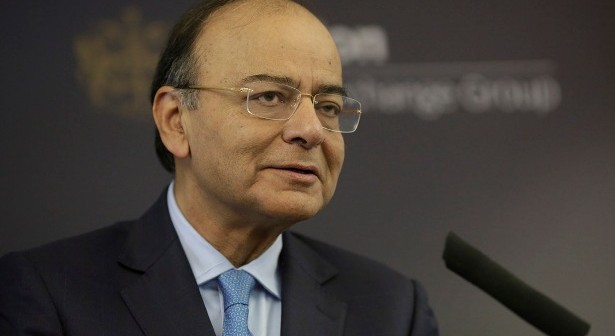Some heavy hitting from the Finance Minister puts the Indian economy on a winning wicket, writes India Inc. CEO Manoj Ladwa.
After all the excitement over the Bharatiya Janata Party’s 4-1 sweep of the recently concluded Assembly elections, it is time once again to focus on the nuts of bolts of governance. In the latest issue of ‘India Investment Journal’, we turn our attention to India’s growth story and the man in charge of shepherding the country to greater economic heights.
Finance Minister Arun Jaitley, as our cover implies, has to bat both like Virender Sehwag and Rahul Dravid at the same time. I know cricket enthusiasts will pillory me for that statement because these two batsmen are as alike as the proverbial chalk and cheese, but let me explain.
As the election results proved once again, the ordinary Indian appreciates, among other things, the management of the economy by Prime Minister Narendra Modi and Jaitley and is willing to give them more time to make good on the promise of providing greater opportunities and more jobs.
In that sense, Jaitley, who is now wearing the additional hat of the country’s Defence Minister as well following Manohar Parrikar’s triumphant return to Goa as Chief Minister, has used the first two years of his tenure to “build his innings” a la Dravid. But with the next General Elections looming – they are due in a little over two years – Jaitley has already increased the tempo and stepped up the scoring rate as Sehwag was wont to do. And that is what we are focusing on in this issue.
The massive $90 billion he has allocated for infrastructure building in this Budget for 2017-18 is, in my opinion, like the proverbial volley of sixes that will take him closer to a winning score. This figure is quite close to the average investment (public and private) of $95 billion that fuelled the 2007-2011 boom. Yes, I know economists will cite inflation to argue that the present value of $95 billion from a decade ago is a lot higher than the nominal figure, but I would urge such people to look up another very important statistic.
Foreign direct investment (FDI) flows into India in the current year are at an estimated $53 billion.The target for 2017-18: $100 billion. And almost all of this figure will go into the generation of productive assets.
Taken together, I feel this massive dose of foreign and public investment can surely make up for the still poor investment rate of the Indian private sector and get the wheels of the economy rolling at a much higher velocity. Read about Jaitley’s growth gambit in our cover feature of this month’s ‘IIJ’. Let me add a point that is not covered in that report. As I have written previously, I feel analysts and even Jaitley’s own government is erring on the side of caution while estimating the growth rate for the coming year.
Let me add a point that is not covered in that report. As I have written previously, I feel analysts and even Jaitley’s own government is erring on the side of caution while estimating the growth rate for the coming year.
Given the empirical evidence of how investments of about $100 billion per year over a three-four year period can send the growth velocity soaring, I feel Jaitley’s thrust on infrastructure building combined with the rising levels of FDI inflows into India will almost definitely take the annual GDP growth rate beyond 8 per cent in the coming year. You can hold me to that – a year and a bit from now.
Elsewhere in the latest edition, we have put together a Sector Focus package on the Indian defence aeronautical industry, which has both foreign defence contractors such as Lockheed, Boeing, Rolls Royce and SAAB, among others, as well as large Indian groups such as the Tatas, L&T, M&M and Reliance waiting eagerly for large orders to take forward the Make in India dream.
I would also like to draw your attention to our analysis on how the Jan Dhan scheme and demonetisation are coming together to take India closer its goal of becoming a digital (and largely cashless) economy.
Meanwhile, as Jaitley and the Modi government approach the final stretch of their five-year “Test match”, we could see some real heavy hitting from the Finance Minister to push the investment cycle into a faster trajectory.
This article was first published in March Edition of India Investment Journal.







